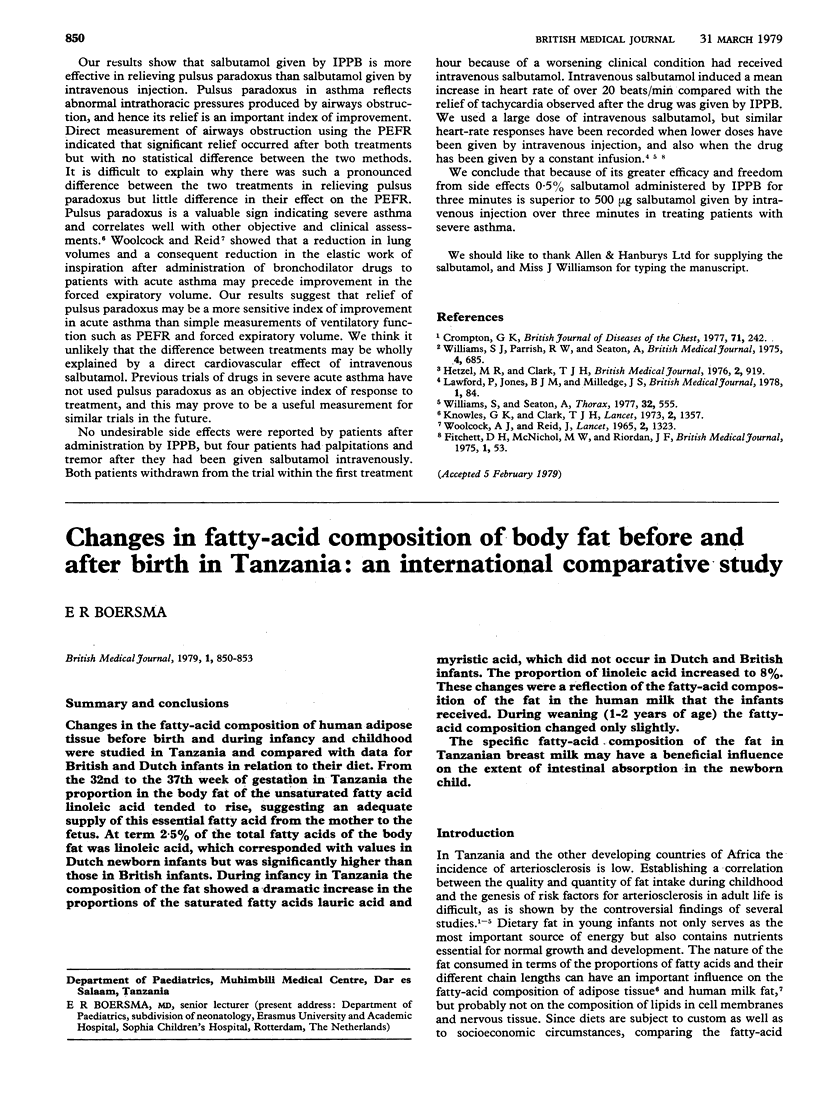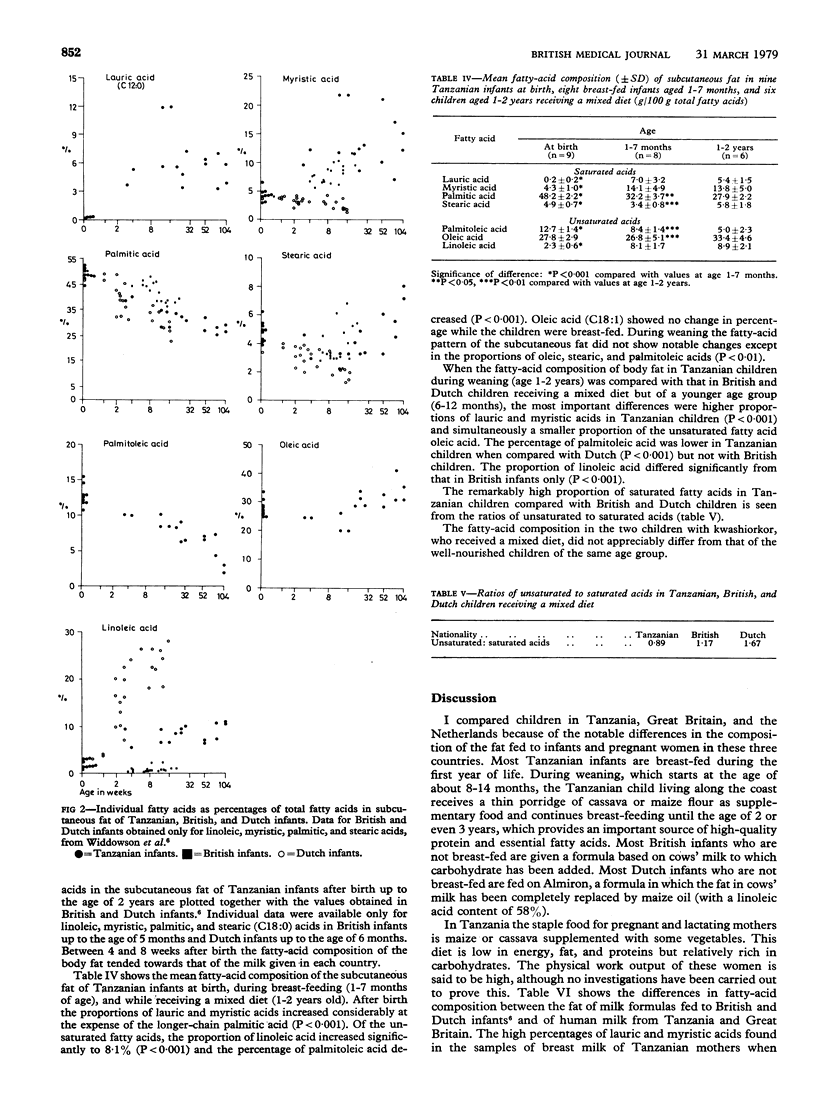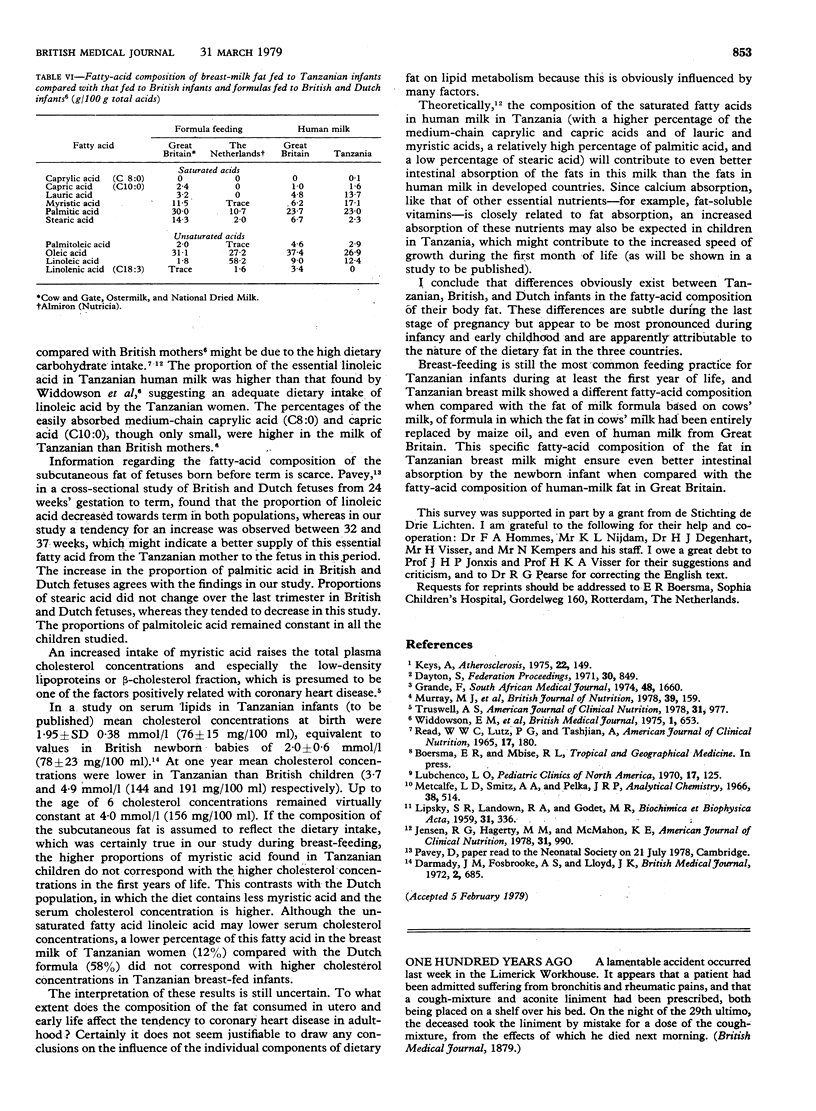Abstract
Changes in the fatty-acid composition of human adipose tissue before birth and during infancy and childhood were studied in Tanzania and compared with data for British and Dutch infants in relation to their diet. From the 32nd to the 37th week of gestation in Tanzania the proportion in the body fat of the unsaturated fatty acid linoleic acid tended to rise, suggesting an adequate supply of this essential fatty acid from the mother to the fetus. At term 2.5% of the total fatty acids of the body fat was linoleic acid, which corresponded with values in Dutch newborn infants but was significantly higher than those in British infants. During infancy in Tanzania the composition of the fat showed a dramatic increase in the proportions of the saturated fatty acids lauric acid and myristic acid, which did not occur in Dutch and British infants. The proportion of linoleic acid increased to 8%. These changes were a reflection of the fatty-acid composition of the fat in the human milk that the infants received. During weaning (1-2 years of age) the fatty-acid composition changed only slightly. The specific fatty-acid composition of the fat in Tanzanian breast milk may have a beneficial influence on the extent of intestinal absorption in the newborn child.
Full text
PDF



Selected References
These references are in PubMed. This may not be the complete list of references from this article.
- Darmady J. M., Fosbrooke A. S., Lloyd J. K. Prospective study of serum cholesterol levels during first year of life. Br Med J. 1972 Jun 17;2(5815):685–688. doi: 10.1136/bmj.2.5815.685. [DOI] [PMC free article] [PubMed] [Google Scholar]
- Dayton S. Rationale for use of lipid-lowering drugs. Fed Proc. 1971 May-Jun;30(3):849–856. [PubMed] [Google Scholar]
- Jensen R. G., Hagerty M. M., McMahon K. E. Lipids of human milk and infant formulas: a review. Am J Clin Nutr. 1978 Jun;31(6):990–1016. doi: 10.1093/ajcn/31.6.990. [DOI] [PubMed] [Google Scholar]
- Keys A. Coronary heart disease--the global picture. Atherosclerosis. 1975 Sep-Oct;22(2):149–192. doi: 10.1016/0021-9150(75)90001-5. [DOI] [PubMed] [Google Scholar]
- LIPSKY S. R., LANDOWNE R. A., GODET M. R. The effects of varying the chemical composition of the stationary liquid on the resolution of the long chain saturated and unsaturated fatty acid esters by gas-liquid chromatography. Biochim Biophys Acta. 1959 Feb;31(2):336–347. doi: 10.1016/0006-3002(59)90006-x. [DOI] [PubMed] [Google Scholar]
- Lubchenco L. O. Assessment of gestational age and development of birth. Pediatr Clin North Am. 1970 Feb;17(1):125–145. doi: 10.1016/s0031-3955(16)32381-1. [DOI] [PubMed] [Google Scholar]
- Murray M. J., Murray A. B., Murray N. J., Murray M. B. Serum cholesterol, triglycerides and heart disease of nomadic and sedentary tribesmen consuming isoenergetic diets of high and low fat content. Br J Nutr. 1978 Jan;39(1):159–163. doi: 10.1079/bjn19780022. [DOI] [PubMed] [Google Scholar]
- Read W. W., Lutz P. G., Tashjian A. Human milk lipids. II. The influence of dietary carbohydrates and fat on the fatty acids of mature milk. A study in four ethnic groups. Am J Clin Nutr. 1965 Sep;17(3):180–183. doi: 10.1093/ajcn/17.3.180. [DOI] [PubMed] [Google Scholar]
- Truswell A. S. Diet and plasma lipids--a reappraisal. Am J Clin Nutr. 1978 Jun;31(6):977–989. doi: 10.1093/ajcn/31.6.977. [DOI] [PubMed] [Google Scholar]


